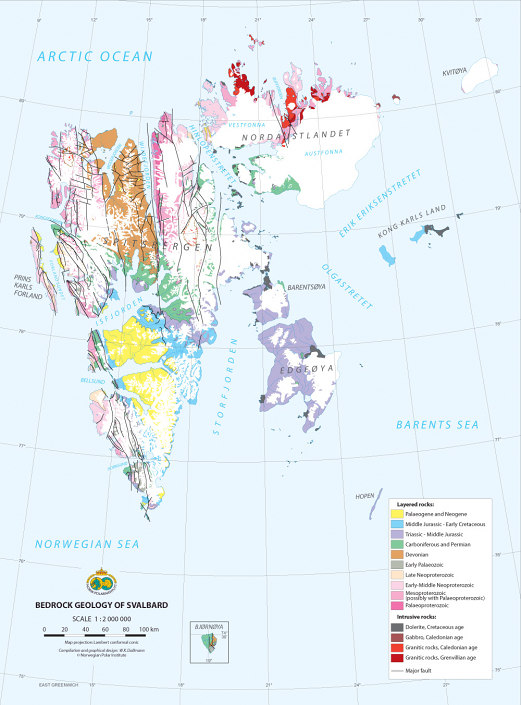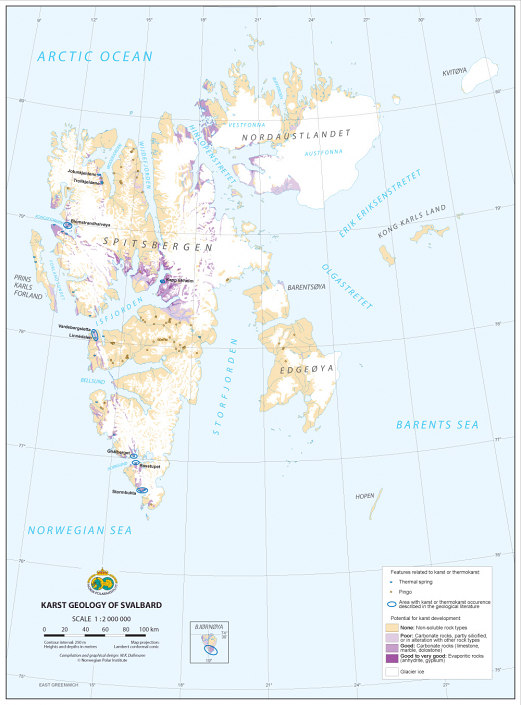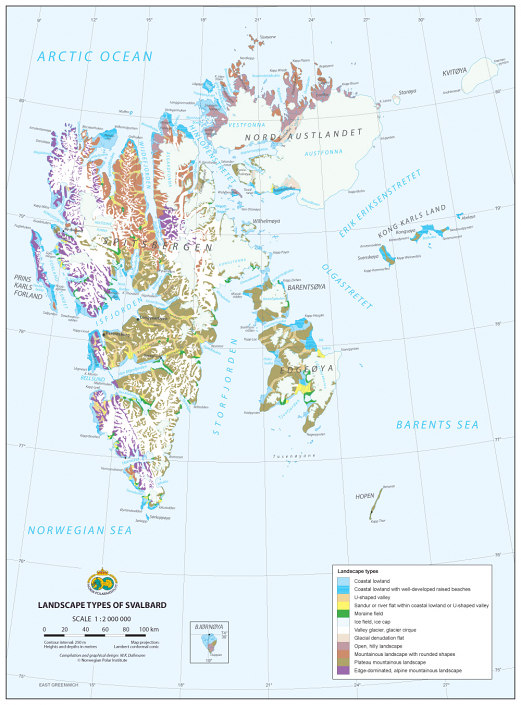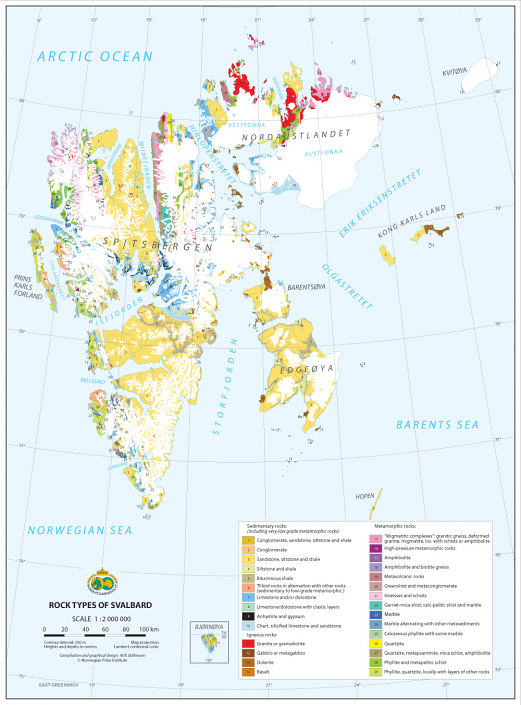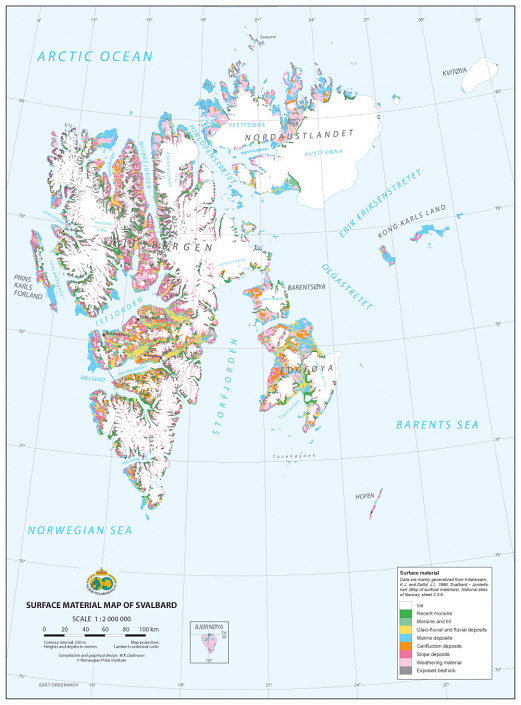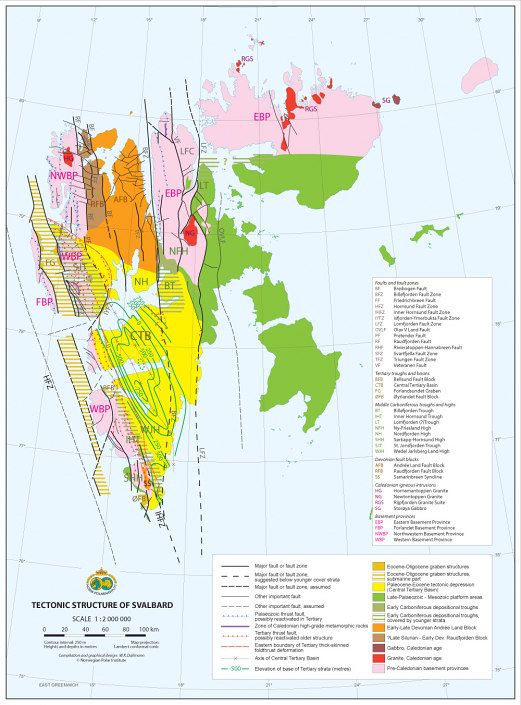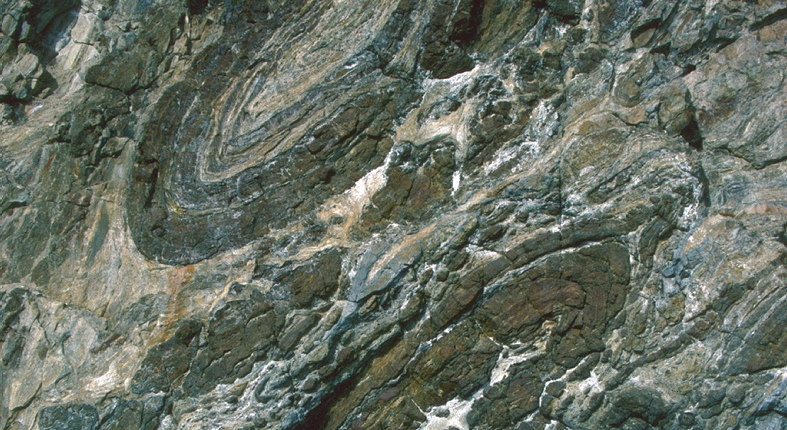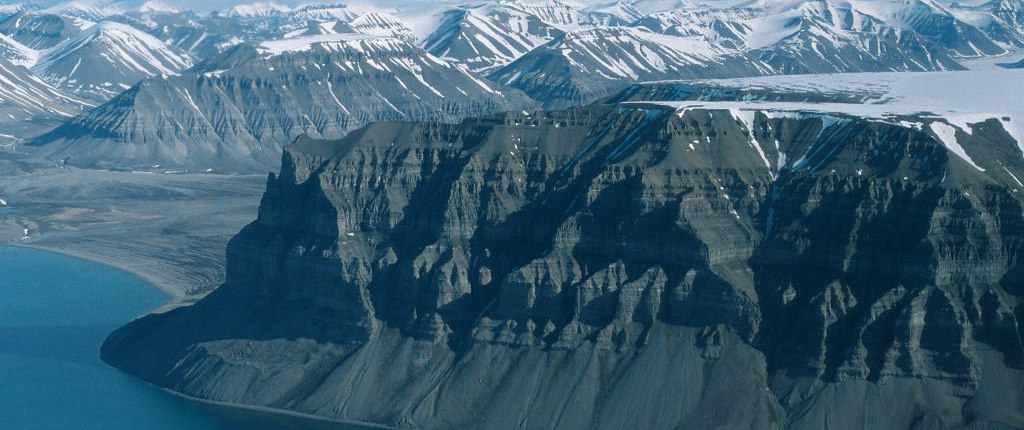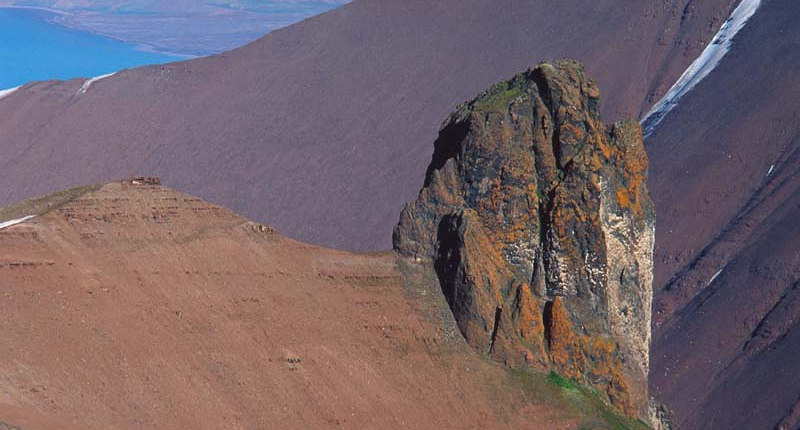The experience you get from entering Hornsund with peaks of lime stone, the nunataks of eastern Spitsbergen or the unreal red hues of Woodfjorden are wildly different.
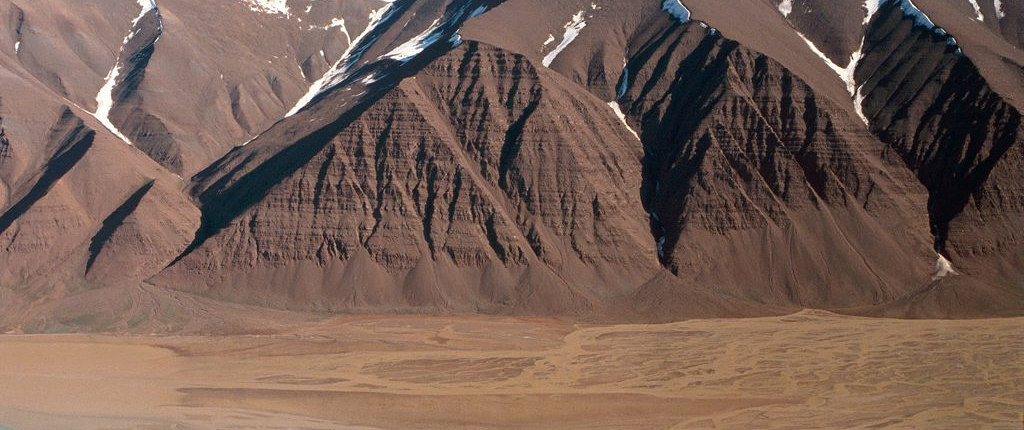
The landscape around Woodfjorden is characterized by red-coloured Devonian sandstones. Photo: Norwegian Polar Institute
A comparable diversity is not found anywhere else in northern Europe and no other places are so many geological periods conserved in rock. In addition to this an unusual amount of rock is exposed, with little soil or vegetation cover, and can therefore be studied uninterrupted over long sections.
During most of its geological history, Svalbard was submerged, and almost continuously deposited sand, gravel, mud, lime, etc., were progressively altered into bedrock. There is little soil in Svalbard and no forrests or agricultural areas which would hide the rock formations. The naked landscape permits clear insight into its geological structure. Although most of the land area is covered by glaciers, Svalbard is one of the few places in the world which provide excellent access to study sections of representing most of earth’s history.
Svalbard is a natural geological archive and a laboratory where the geological processes of the past and present are being demonstrated.
Publications

